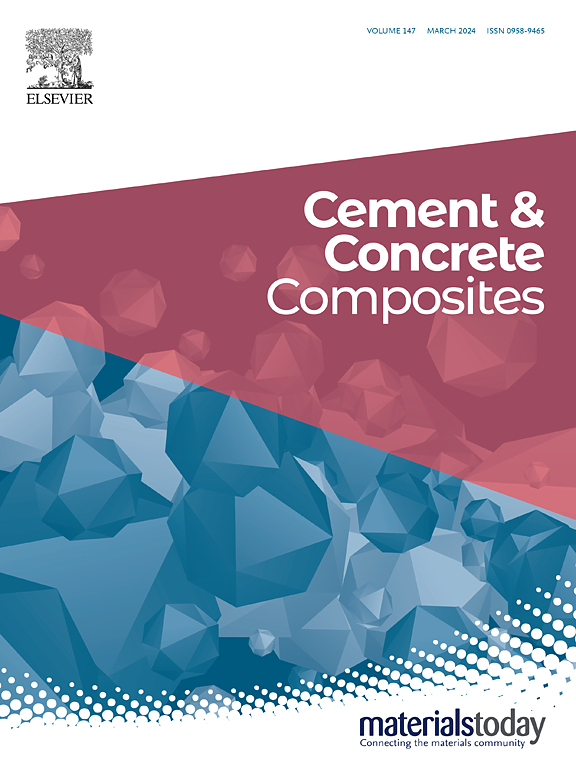Experimental and numerical study of strain distributions and shear lag effects in FRP tendon pull-out experiments
IF 10.8
1区 工程技术
Q1 CONSTRUCTION & BUILDING TECHNOLOGY
引用次数: 0
Abstract
In the present study, sand-coated carbon fiber reinforced polymer (CFRP) tendons were instrumented with integrated optical fibers. The direct integration during manufacturing did not affect the bond between tendon and concrete and resulted in an excellent measurement quality. The tendons were cast into concrete cubes with different embedment lengths of 5, 10 and 15 times the diameter. The bond between tendon and concrete was tested using direct pull-out tests. Not only the force and the end-slip were measured but also the strain distribution in the tendon. This allowed to derive a position-dependent local bond–slip curve. Significant deviations from the commonly measured average bond-stress vs. end-slip relationship were observed for long and short embedment lengths. A complementary finite element study confirmed that average bond-stress vs. end-slip curves cannot properly predict the strain distribution in pull-out experiments, especially for longer embedment lengths. This allows to conclude that strain distributions are highly affected by local effects, e.g. partial pull-out failure of the concrete. In addition, shear lag was identified as additional parameter affecting the measurements of optical fibers when integrated in materials with low shear stiffness. The shear lag is highly dependent on the radial and axial position and further affected by the tendon material, the diameter of the tendon and the magnitude of the shear stress.
FRP筋拉拔试验中应变分布及剪切滞后效应的试验与数值研究
本研究采用集成光纤对砂包覆碳纤维增强聚合物(CFRP)肌腱进行检测。制造过程中的直接集成不影响筋与混凝土之间的粘结,测量质量优异。将肌腱浇筑成混凝土立方体,其嵌入长度分别为直径的5倍、10倍和15倍。采用直接拉拔试验对钢筋与混凝土的粘结性进行了测试。不仅测量了力和端滑移,还测量了应变在肌腱中的分布。这样就可以推导出与位置相关的局部键-滑移曲线。在长和短的嵌入长度中,观察到与通常测量的平均粘结应力与端滑移关系的显著偏差。一项补充的有限元研究证实,平均粘结应力与端滑移曲线不能正确预测拉拔实验中的应变分布,特别是对于较长的嵌入长度。这可以得出结论,应变分布受到局部效应的高度影响,例如混凝土的部分拉出破坏。此外,剪切滞后是影响光纤在低剪切刚度材料中的测量的附加参数。剪切滞后高度依赖于径向和轴向位置,并进一步受到肌腱材料、肌腱直径和剪应力大小的影响。
本文章由计算机程序翻译,如有差异,请以英文原文为准。
求助全文
约1分钟内获得全文
求助全文
来源期刊

Cement & concrete composites
工程技术-材料科学:复合
CiteScore
18.70
自引率
11.40%
发文量
459
审稿时长
65 days
期刊介绍:
Cement & concrete composites focuses on advancements in cement-concrete composite technology and the production, use, and performance of cement-based construction materials. It covers a wide range of materials, including fiber-reinforced composites, polymer composites, ferrocement, and those incorporating special aggregates or waste materials. Major themes include microstructure, material properties, testing, durability, mechanics, modeling, design, fabrication, and practical applications. The journal welcomes papers on structural behavior, field studies, repair and maintenance, serviceability, and sustainability. It aims to enhance understanding, provide a platform for unconventional materials, promote low-cost energy-saving materials, and bridge the gap between materials science, engineering, and construction. Special issues on emerging topics are also published to encourage collaboration between materials scientists, engineers, designers, and fabricators.
 求助内容:
求助内容: 应助结果提醒方式:
应助结果提醒方式:


